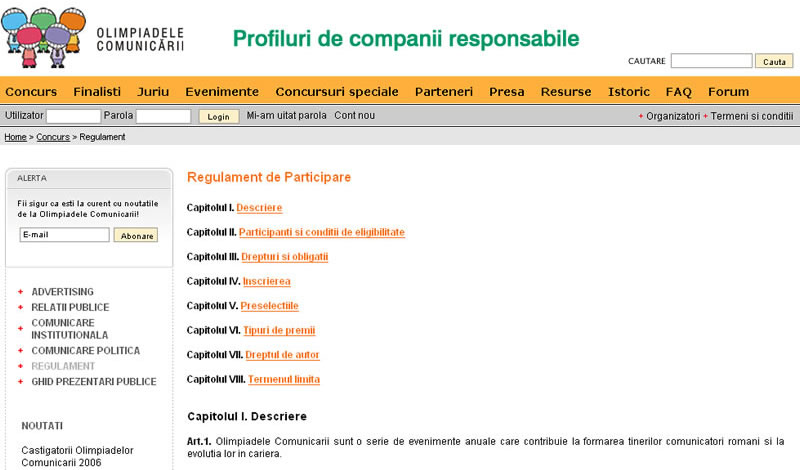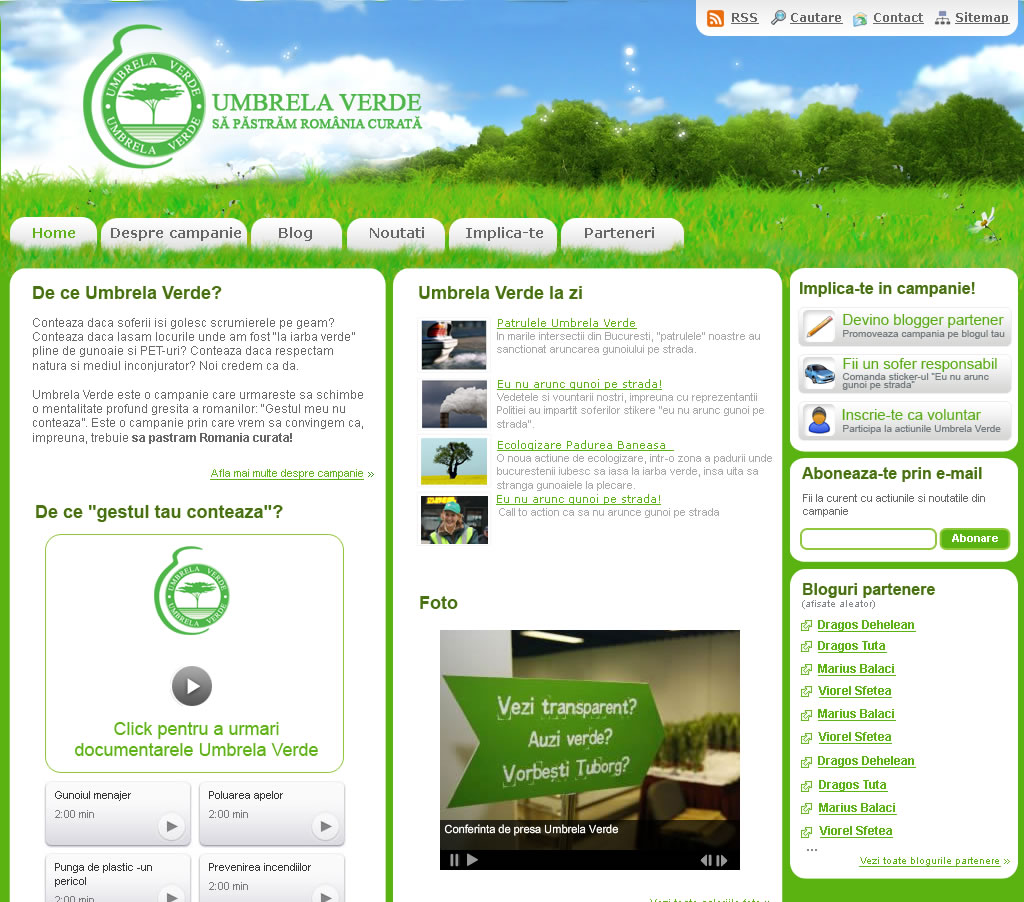In a deceiving online landscape, PR professionals have only a glimpse of an eye to grasp their readers’ attention and, more important, trust. Writing good content for corporate websites or email newsletters has become more important than ever.
In 1997, Jakob Nielsen, the so-called “usability guru“, conducted a study to find “How Users Read on the Web?“. At the end of the study, he answered: “They don’t“. 79% of the users just scan the page and only 16% read word-by-word.
More recent, a growing number of studies have answered the question “how should you write content for the web”. We’ve condensed their findings into 10 rules of web content writing to help you generate the best user experience for your clients and stakeholders.
1. Write short and simple sentences
Web users read online text 25% slower than on print. That’s why you need to write short sentences, no more than 15-25 words each. The fewer the better.
Write sentences that have only one main idea. The users will scan the text easier and understand it better.
For example, the following sentence contains two main ideas:
You can register until the end of the next week for the training organized in Bucharest on September the 3rd.
It’s simple to break it into two distinct sentences:
The training will be organized in Bucharest on September the 3rd.
and
You can register until the end of the next week.
Write most sentences using the basic syntax: Subject + Predicator + Direct Object + Indirect Object. We can remember this syntax from the time we learned to read, in school. Unfortunately, at some point later we began to use more complex and choosy sentences because we felt the basic ones sounded too mechanical.
But science shows us the internet users find the basic sentences easier to read. Of course, if you want to have a diversified text, use sparingly more complex phrases, but not more than 25% of total.
2. Use strong verbs instead of phrasal verbs
Phrasal verbs complicate texts, are more informal and sometimes hard to understand by an international audience. Eliminate them and use stronger words instead. The flow will improve and the readers will understand better what the text asks them to do.
| Instead of: | Write: |
| “get rid of the phrasal verbs” | “eliminate phrasal verbs” |
| “you have to make up your mind“ | “you have to decide“ |
| “I’ve run into him” | “I’ve met him” |
3. Remove everything that can be removed (without changing the sense)
We all tend to use transition words or phrases to “polish” our thoughts. But on the internet, you can safely remove the majority of them. The only consequence will be a more readable text.
One big mistake companies do is to use superlative terms when talking about themselves. The only people that like this marketing jargon are the ones who wrote it. The user will only lose trust in the company each time they read: “our company is the most […]”, “we use state of the art technology […]” or “we provide clients with high-quality products that […]”.
To eliminate, look at transition words or phrases, adverbs, superlative adjectives or prepositions.
| Instead of: | Write: |
| “the project that won [..]” | “the winning project” |
| “one of the most important refinery […]” | “an important refinery […]” |
| “provides to NGOs the possibility to enter […]” | “enables NGOs to enter […]” |
4. Speak with the reader and call to action
The power of the internet is in its engaging nature. Be clear about who you talk to and write as if you were having a face to face conversation. It’s the same as when you speak on the phone and you can hear the other person laughing. The users will feel if you speak to them or with them.
| Try to avoid: | Use often: |
| “We”, “our”, “” etc. | “you”, “yours” |
To keep the users engaged, always tell them what to do next:
- “read the statute“;
- “download the registration form“;
- “subscribe to the mailing list“.
5. Use the active voice
Sentences in active voice are clearer and shorter than the ones in the passive voice. They can draw and mantain the user’s attention.
| Instead of: | Write: |
| “It was reported by the instructor [..]” | “The instructor reported[..]” |
| “The factory’s privatization was planned by the Government […]” | “The Government planned the factory privatization […]” |
6. Use short and autonomous paragraphs
A paragraph should have a maximum of 4 sentences and a length of no more than 2-3 lines. Not only this will make the page easier to read, but the users will also have “white spaces” where they can rest their eyes.
Always use the beginning of a paragraph for the main idea you want to transmit. The users decide to read further depending on that sentence. Use the rest of the paragraph to provide details or arguments in support of the main idea.
Each paragraph should convey a meaningful message if it’s taken out of the context. That’s because:
- users can skim a page regardless of the paragraph order;
- they can reach a specific paragraph after they have previously used a search engine.
7. Turn enumerations into bullet lists
Bullet lists are important tools for skimming a long web page.
Instead of : “You can attend to one of our training in Bucuresti, Craiova, Constanta, Cluj Napoca, Timisoara, Oradea, Deva, Bacau“,
Use a bullet list:- Bucuresti
- Bacau
- Craiova […]
Sometimes, the order of the elements in a list is important. For example, when you write about the steps for registering to an event. In this case use a numbered list :
1. Download the registration form from our website,
2. Complete the form and send it to the following address: […]
3. Pay the invoice we’ll send you, in the following account: […]
8. Use relevant titles and subheadings
Web users navigate a page with a specific goal at a time. They search for a particular information and they want to find it quick. That’s why they use headings to decide where the information could be.
Write clear and detailed subheadings to help them skim the page and understand what they can find under each. For example, instead of simple “Directions”, use “Directions to Event Venue”. Instead of “Rules”, write “Eligibility Criteria for Participating Teams”.
9. Use visual signs to guide the navigation
The next signaling level after subheadings is formed of:
a. Pictures and graphics. For example, you can use an image of a special guest to your event to signal that the text around is about his biography or about his presentation.
b. Hyperlinks. You can use them in at least two ways:
At the end of a sentence, where we expect to find the conclusion: “To find the PR professionals’ opinions about our event go to the Interviews Section“;
At the beginning of a paragraph. In this case, the text following the hyperlink should be an explanation: “Interviews – PR professionals’ opinions about our event“.
c. Bold texts. Draw users attention to important content or ideas. Don’t exaggerate though with the bold-faced type. Instead of easing the scanning, you risk making the text difficult to discern.
10. Use anchors for long pages with different types of content

Example: competition terms and conditions (Communication Olympics website)
Web Content Writing Wrap-up
To stress the importance of the above rules, here are three famous quotes about writing excellence, formulated long before the books about web users experience:
The most valuable of all talents is that of never using two words when one will do – Thomas Jefferson
If I had more time, I would have written a shorter letter – Marcus Tullius Cicero
It is my ambition to say in ten sentences what others say in a whole book – Friedrich Nietzsche
=====================================
Further Readings:
 Studies and articles by Jakob Nielsen (photo)
Studies and articles by Jakob Nielsen (photo)
Article colection “Writing for the Web”

The book “Content is King-Writing and Editing Online”, by David Mill (photo) see the book’s site.
Reference chapters: “Copywriting for Online Versus Offline“, “The Fundamentals“, “Writing for Websites“.
 The book “Content Critical-Gaining Competitive Advantage through High-Quality Web Content”, by Gerry McGovern (photo) and Rob Norton see the book’s site
The book “Content Critical-Gaining Competitive Advantage through High-Quality Web Content”, by Gerry McGovern (photo) and Rob Norton see the book’s site
Reference chapters: “The Reader Is King“, “Creating Content“, “Editing Content“.


